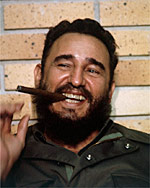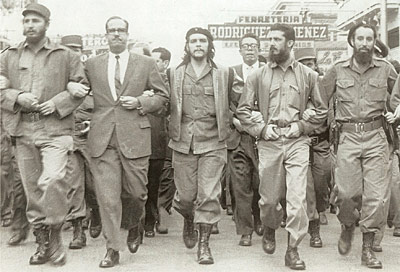Cuban Revolution: 1953-1959

Fidel Castro, 1974 [1]
The Cuban Revolution was a successful armed revolt that overthrew the U.S.-backed Cuban dictator, Fulgencio Batista, on January 1, 1959, after more than five years of struggle. Fidel Alejandro Castro Ruz was the primary leader of the Cuban Revolution.
Neither the U.S. nor the U.S.S.R. was directly involved in the Cuban Revolution. On May 1, 1961, Castro declared Cuba a socialist state and officially abolished multiparty elections. On December 2, 1961, Fidel Castro declared that he was a Marxist-Leninist and that Cuba was adopting communism. After Fidel Castro became leader of Cuba, he established a communist dictatorship. Cuba then received aid from the U.S.S.R.

March 5, 1960: Memorial service march for victims of an explosion of a ship in Havana. On the far left of the photo is Fidel Castro, while in the center is Che Guevara. [2]

Map showing Cuba [3]
Outcomes:
- In 1961, after the U.S.-backed Bay of Pigs Invasion, the new Cuban government nationalized all property held by religious organizations, including the prevalent Roman Catholic Church. Hundreds of members of this church were expelled from the country. The new Cuban government was declared officially atheist.
- After the Cuban Missile Crisis of 1962, the U.S. promised never to try to invade Cuba, but still refused to trade with Cuba.
- On February 7, 1962, the U.S. imposed a trade embargo against Cuba. This embargo was broadened during 1962 and 1963, including a general travel ban for American tourists. The embargo still exists.
Page Notes:
[1] Source: This image from http://en.wikipedia.org/wiki/File:FidelCastroSmiling.jpg is in the public domain.
[2] Source: This image from http://en.wikipedia.org/wiki/File:CheLaCoubreMarch.jpg is in the public domain.
[3] Source: This image from http://en.wikipedia.org/wiki/File:LocationCuba.svg is licensed under Creative Commons-Attribution-Share Alike 3.0 Unported license.
